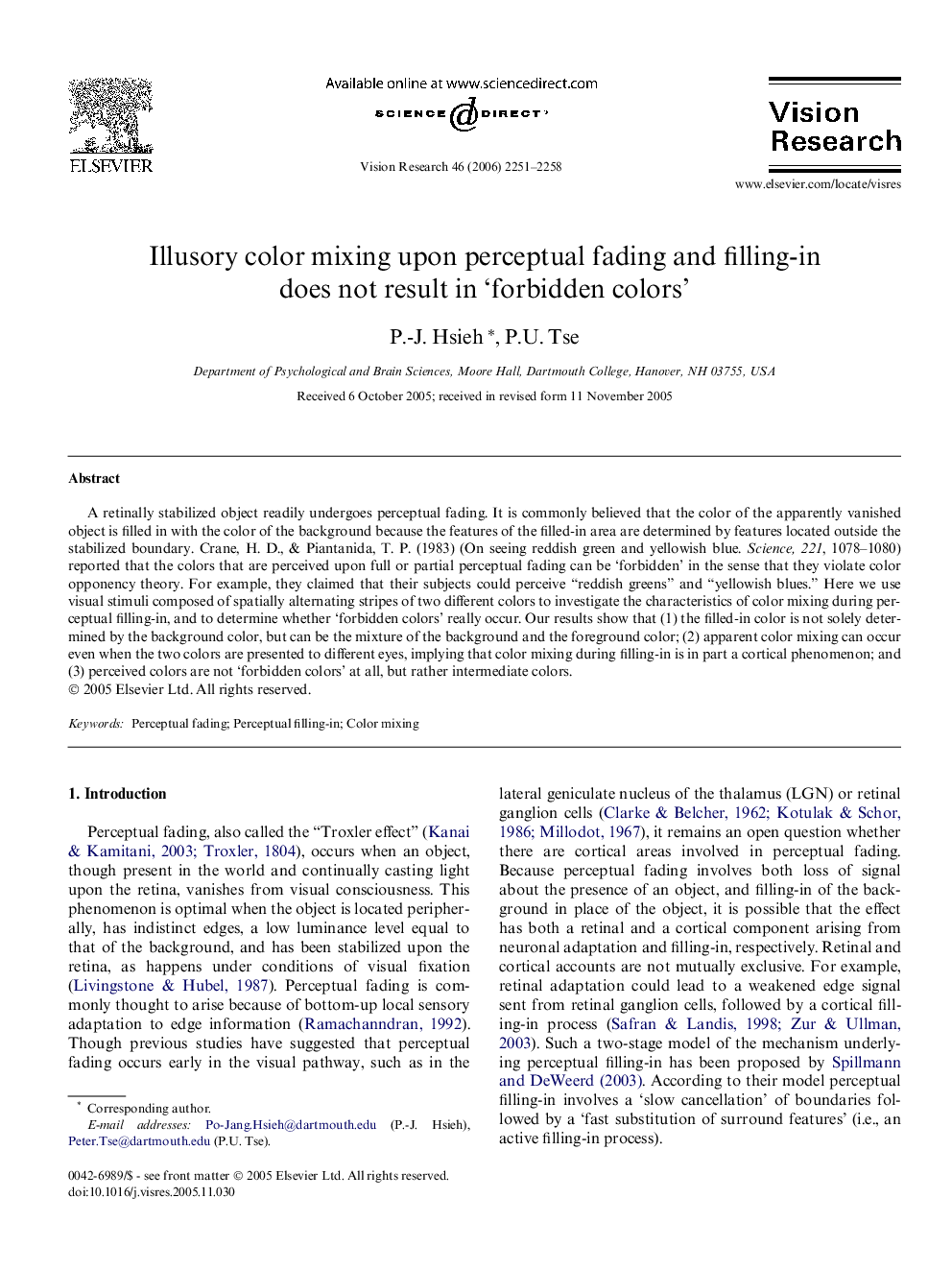| Article ID | Journal | Published Year | Pages | File Type |
|---|---|---|---|---|
| 4036680 | Vision Research | 2006 | 8 Pages |
A retinally stabilized object readily undergoes perceptual fading. It is commonly believed that the color of the apparently vanished object is filled in with the color of the background because the features of the filled-in area are determined by features located outside the stabilized boundary. Crane, H. D., & Piantanida, T. P. (1983) (On seeing reddish green and yellowish blue. Science, 221, 1078–1080) reported that the colors that are perceived upon full or partial perceptual fading can be ‘forbidden’ in the sense that they violate color opponency theory. For example, they claimed that their subjects could perceive “reddish greens” and “yellowish blues.” Here we use visual stimuli composed of spatially alternating stripes of two different colors to investigate the characteristics of color mixing during perceptual filling-in, and to determine whether ‘forbidden colors’ really occur. Our results show that (1) the filled-in color is not solely determined by the background color, but can be the mixture of the background and the foreground color; (2) apparent color mixing can occur even when the two colors are presented to different eyes, implying that color mixing during filling-in is in part a cortical phenomenon; and (3) perceived colors are not ‘forbidden colors’ at all, but rather intermediate colors.
